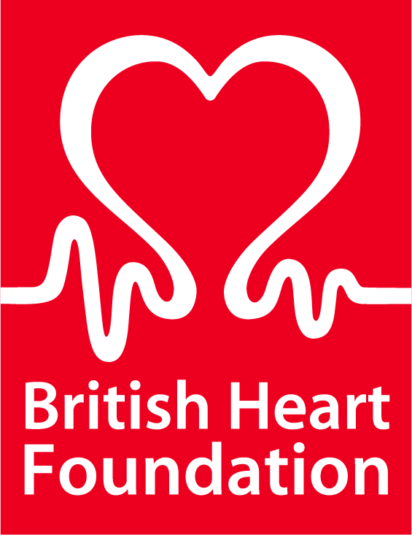An Interview with Prof Jeremy Pearson, Assistant Medical Director at the BHF
![]()
Written by James Coker | Reporter, European Medical Journal | @EMJJamesCoker
![]()
 The British Heart Foundation (BHF) unveiled a major new research initiative during the recent European Society of Cardiology (ESC) Congress, which was held from 25th–29th August 2018 in Munich, Germany. This was the Big Beat Challenge, for which teams of international researchers have been invited to submit proposals for transformative solutions to challenges in heart and circulatory science and disease. The emphasis is on achieving a single groundbreaking advancement that contributes to significant patient benefit on a global scale within the field of cardiology.1 Researchers have a 6-month period in which to submit their proposals from the date the challenge was issued, with the eventual winners awarded a grant of £30 million to conduct their study. To find out more about the challenge and how the process will work, we spoke to Prof Jeremy Pearson, Assistant Medical Director at the BHF. Discussion then turned to other work and research the BHF is focussing upon, with a particular emphasis on their promotion of collaboration and partnership.
The British Heart Foundation (BHF) unveiled a major new research initiative during the recent European Society of Cardiology (ESC) Congress, which was held from 25th–29th August 2018 in Munich, Germany. This was the Big Beat Challenge, for which teams of international researchers have been invited to submit proposals for transformative solutions to challenges in heart and circulatory science and disease. The emphasis is on achieving a single groundbreaking advancement that contributes to significant patient benefit on a global scale within the field of cardiology.1 Researchers have a 6-month period in which to submit their proposals from the date the challenge was issued, with the eventual winners awarded a grant of £30 million to conduct their study. To find out more about the challenge and how the process will work, we spoke to Prof Jeremy Pearson, Assistant Medical Director at the BHF. Discussion then turned to other work and research the BHF is focussing upon, with a particular emphasis on their promotion of collaboration and partnership.
 Unique Initiative
Unique Initiative
Prof Pearson firstly explained the uniqueness of the Big Beat Challenge for the BHF. Over many years, the UK-based charity has funded and actively participated in numerous research projects; one example is providing robust evidence for the use of a number of drugs that have now become standard treatments for patients with coronary artery disease, such as aspirin, beta-blockers, and statins. While having global impact, these projects have always been funded at a national level, and at much lower monetary levels than the Big Beat Challenge. “We’ve never awarded so much money in one go, nor have we specifically gone out and sought international applicants for an award,” he commented. This means that the research needs to be on a completely different scale to anything funded by the BHF in the past.
The expectation is that there will be around 100 outline applications submitted by the end of the year. From these, around 20 will be shortlisted and presented to a specially assembled international panel, who will then select a small number in the region of 5 to be encouraged to work up to a full application; these research groups will then be given some initial funding so they can create a longer, more detailed application. These applications will then be reviewed by that same panel in addition to external expert review assessment to select the proposal they believe is the strongest, before this decision is ratified by the BHF’s Board of Trustees. “It’s outside all our standard grant schemes because it’s larger and the review process needs to be different. The whole idea is to capture as wide a set of ideas as we can,” added Prof Pearson.
Multidisciplinary Aspect
Prof Pearson further broke down the criteria on which the applications will be judged; a particularly important aspect of this is cross-disciplinary partnership. “This really has to be multidisciplinary, it’s not just a bunch of cardiovascular scientists or clinicians around the world, they’ve got to bring in people from other disciplines so they can tackle things in a new way,” he outlined. “They might be engineers, they might be mathematicians, they might be chemists. The other thing is that we encourage partnership with industry, whether that be biotech or pharma. And the third thing is that the money must be aimed at addressing an area of unmet clinical need. We don’t expect them necessarily to have cured a disease within 5 years, but the whole thing must be directed at a solution that is clinically applicable in due course.”
With the vast sum of money involved, it was felt that an internationalised, multi-disciplinary approach is needed to ensure that a truly novel advance is made. In keeping with this idea, outside of the Big Beat Challenge, the BHF has sought to develop partnerships across borders, for example, a bi-lateral agreement with German cardiovascular research centres, setting aside money to encourage projects between German and UK partners. “If you look at the papers that are published from the work that we fund, most of them have international collaborators from all over the place on them,” said Prof Pearson. “Clearly that’s happening, but it’s not happening in a focussed way with a specific transfer of money that we’re putting into it: if we can accelerate that, it would be a good thing.”
Link to Other Therapeutic Areas
Another aspect of the BHF’s research focus which has grown in importance is collaboration with other fields of medicine. In the context of an ageing population, there is a greater prevalence of people with multiple conditions that are often interlinked. An obvious example that relates to cardiology is diabetes, but there are also a number of less established areas. One is the link between cardiovascular health and dementia, with cardiovascular disease a risk factor for the acceleration of vascular dementia, and therefore to the development of dementia. Another emerging area is between cardiology and oncology. “When you give patients treatment for their tumours, it actually is not good for your heart,” said Prof Pearson. “We’re now realising that lots of people are surviving their cancers but the chemotherapy they’ve been given actually weakens their heart. There’s a set of people now beginning to come together to tackle questions like this which we didn’t even know we were going to have to a few years ago. So, cardio-oncology is almost becoming a speciality; it’s a very small one at the moment but it’s clearly becoming more important.”
There are various reasons why the Big Beat Challenge has been launched at this time. One is financial, with BHF currently having the resources available to fund such a project. Another is to redress the balance between the finances for research in cardiology in comparison to other fields. Prof Pearson gave the example of cancer, which tends to receive greater levels of philanthropic donations than cardiology. He believes a major reason for this is the perception among many people that cardiovascular diseases are often self-inflicted, and therefore less worthy of funding. “If you look at the disease burden of all cancers across the world, it’s substantially lower than the disease burden of cardiovascular disease; however, the amount of funding going into cancer research is substantially greater. I think again this is an opportunity to try and redress the balance slightly and say look, there really is a big problem out here, we need to solve it, we’re under-resourced compared with our colleagues who are fortunately resourced to solve cancer problems,” he commented.
Opportunities of Technological Advancements
Another factor as to why it was viewed as an opportune time to launch such an initiative relates to the major technological advancements of recent years, including big data, machine learning, and artificial intelligence, which offer fresh opportunities for understanding the underlying causes of heart disease and, as a result, new treatments. This is another area that is becoming increasingly important for the BHF. “We are increasingly getting applications that use this kind of technology; we funded a couple recently and they’re both in the area of imaging the heart. That lends itself to this kind of technology because you have moving images that you can quantify in so many ways of a beating heart using magnetic resonance or other modalities, which is a very complicated picture or set of data. And if you build up a series of pictures from many people, you can begin to detect things using artificial intelligence and analysing these images that no single human being can ever do,” stated Prof Pearson.
One example of this is a research project partly funded by the BHF that found that 1% of participants had a mutation of the titin gene, which pre-disposes them to heart disease.2 This change in the heart structure is so small it could never have been found without the availability of such technologies.
New Partnerships
Prof Pearson also informed us about an exciting new collaboration the BHF has helped set up and fund to exploit these new technologies in health research to their full potential. This is named Health Data Research UK,3 which develops and applies cutting-edge data science approaches to find solutions to the biggest health challenges being faced. There are currently a number of projects being undertaken at universities following the awards of grants from this organisation, many of which have strong links to cardiovascular disease.
Another important UK-based partnership that the BHF has a very prominent role in is the UK Prevention Research Partnership (UKPRP), another demonstration of the charity’s belief and commitment to collaboration across multiple disciplines and fields.4 Funded by a number of bodies, including the Medical Research Council (MRC), the Health Foundation, Cancer Research UK, and the Wellcome Trust, this initiative aims to enhance and better co-ordinate prevention research in response to the rise of non-communicable diseases, of which cardiovascular conditions are a major component. “The whole premise there is that we want to encourage grants that, if they are successful, will actually change population health, rather than just changing health in a single geographical area, for example. This tends to be the problem with prevention research: if you do a local study in one place and show you can do something, it’s not easily translatable on a larger scale usually, and therefore it doesn’t actually have a huge effect,” elucidated Prof Pearson.
EMJ Cardiology 6.1
The BHF clearly has a major focus on increasing collaboration between different organisations and disciplines in the world of healthcare to find solutions to the challenges faced in cardiovascular disease and other related conditions. A joined-up approach, involving the pooling of knowledge and technologies across sectors and borders, appears to be key to improving patient outcomes on a large scale in this area of medicine. The EMJ is committed to reporting new findings and key insights in cardiology, and many of these were presented in the latest edition of the EMJ Cardiology eJournal in October, which is available to read here on our website. This includes a review of this year’s ESC Congress and summaries of symposium and oral presentations that took place at the same event, as well as a selection of peer-reviewed papers covering a range of pertinent topics in the field of cardiovascular health. You can also subscribe for free to content from any of our 16 therapeutic areas by clicking here.
REFERENCES
- British Heart Foundation. The Big Beat Challenge — It’s time for radical change in heart research. 2018. Available at: https://blog.bhf.org.uk/its-time-for-radical-change-in-heart-research-the-big-beat-challenge-df424daefb52. Last accessed: 22 October 2018.
- British Heart Foundation. Around 600,000 in the UK living with faulty gene that could lead to heart failure. Available at: https://www.bhf.org.uk/what-we-do/news-from-the-bhf/news-archive/2016/november/around-600-000-in-uk-living-with-faulty-gene-that-could-lead-to-heart-failure. Last accessed: 22 October 2018.
- Health Data Research UK (HDRUK). About. Available at: https://www.hdruk.ac.uk/about/. Last accessed: 22 October 2018.
- Medical Research Council (MRC). UK Prevention Research Partnership (UKPRP) – Initiative Launch. Available at: https://mrc.ukri.org/research/initiatives/prevention-research/ukprp/ukprp-initiative-launch/. Last accessed: 22 October 2018.








